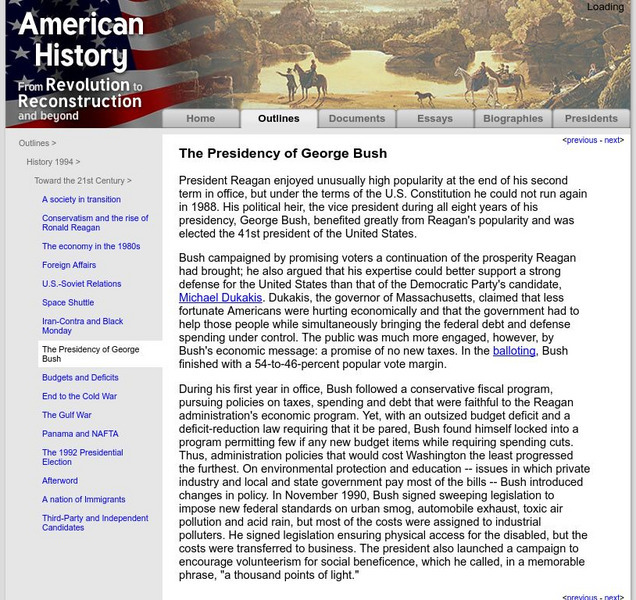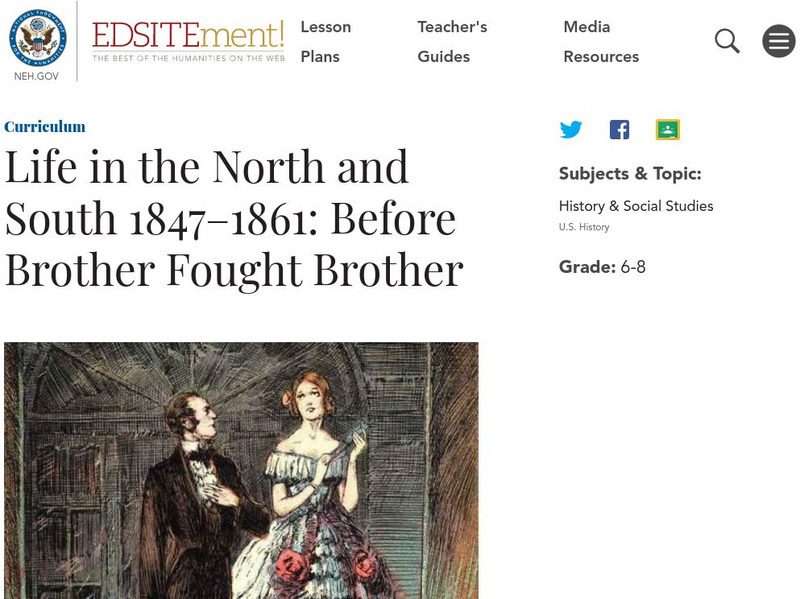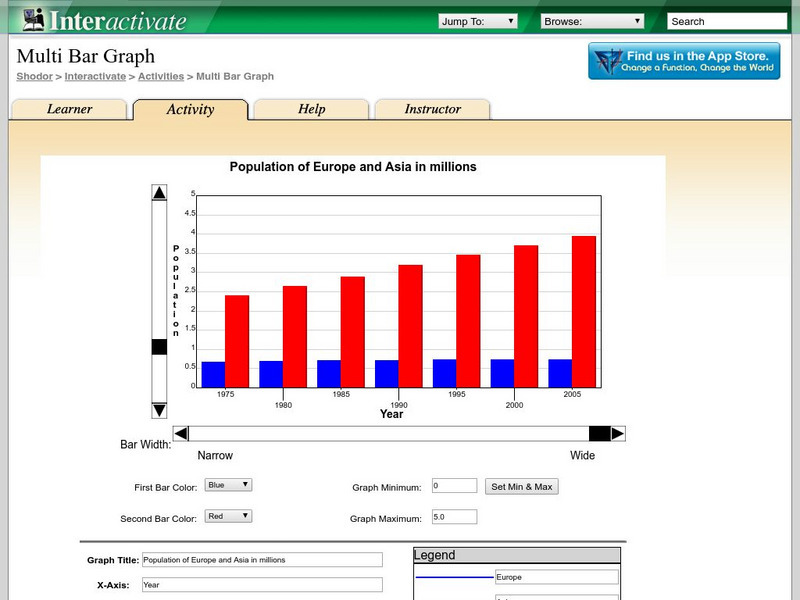University of Groningen
American History: Outlines: The Presidency of George Bush
This site has information about the election and presidency of George H.W. Bush. Links within the text go to other pages with information.
National Endowment for the Humanities
Neh: Edsit Ement: Anishinabe Ojibwe Chippewa: Culture
Though written for grades 3-5, this lesson plan can be easily changed to help students of all ages learn about the Chippewa people. Additional resources provide historical, cultural, and geographical facts concerning this Native American...
NOAA
Noaa: Boat Building Challenge [Pdf]
Read to find out about the first boat builders. Construct your own boat out of common materials to explore buoyancy.
National Endowment for the Humanities
Neh: Edsit Ement: Life in North & South 1847 1861: Before Brother Fought Brother
The five lessons in this unit are designed to help students develop a foundation on which to understand the basic disagreements between North and South through the investigation of primary source documents, photographs, and census...
PBS
Pbs Learning Media: The Wreck of the Corinthian
This interactive activity, adapted from material provided by the ECHO partners, tells the story of the wreck and towing of the whaling ship Corinthian using three narrative sources.
PBS
Pbs Learning Media: Buoyancy Brainteasers: Buoyancy Question
This interactive brainteaser from the NOVA: "Voyage of Doom" Web site challenges you to figure out what causes an object to sink.
PBS
Pbs Learning Media: How the Woodpecker Avoids a Headache
This diagram from Rainbird Publishing describes the specialized physical characteristics that allow woodpeckers to create some of the most secure nests in the bird world.
University of South Florida
Educational Technology Clearinghouse: Lit2 Go: Sara Cone Bryant: Little Daylight
Text of the fairy tale, "Little Daylight," by Sara Cone Bryant. The text can be read online or downloaded in MP3 or PDF format. In addition, the story has downloadable support material which focuses on various reading skills and strategies.
Wolfram Research
Wolfram Math World: Euclid: The Elements
The classic treatise in geometry written by Euclid is presented in English. It is the textbook used for more than 1,000 years in western Europe.
University of Alberta
Atlas of Alberta Railways: Before the Railway: Trails, Canoes and York Boats
Presented by the University of Alberta, this resource contains information on the early trade routes used in western Canada before the construction of the railway. The site also provides digital maps showing the locations of the land and...
Shodor Education Foundation
Shodor Interactivate: Spinner
This interactive learning activity allows students to explore experimental and theoretical probabilities using a spinner. Teacher resources are included.
Shodor Education Foundation
Shodor Interactivate: Experimental Probability
This interactive learning activity allows students to explore experimental probability using spinners and dice. Teacher resources are included.
Shodor Education Foundation
Shodor Interactivate: Multi Bar Graph
The interactive learning activity allows students to manipulate a double bar graph. Teacher resources are included.
Science Buddies
Science Buddies: Solid Motor Rocket Propulsion
What does it take to launch a satellite to explore Mars, or a mission to the moon? This project has several possible variations for exploring the physics of rockets. This is rocket science.
Smithsonian Institution
Smithsonian Learning Lab: Decoding the Past: The Work of Archaeologists
Through this study, learners will think like an archaeologist, and move towards a better understanding of our world by taking a look back at civilizations of the past.
Smithsonian Institution
Smithsonian Education: Minerals, Crystals, and Gems
Through this series of three lessons, students will gain an understanding of the basics of mineral science. In their investigation they will also work through the scientific process as they practice their observation skills, form...
Huntington Library
Huntington Library: Garden Lesson Plans: Japanese Garden Vocabulary: Haiku [Pdf]
A mini-unit on haiku where students learn about and write haiku inspired by Japanese gardens. This activity is intended to be done in conjunction with a visit to a Japanese garden, but this is not essential.
Huntington Library
Huntington Library: Garden Lesson Plans: Elements of a Japanese Garden [Pdf]
A multi-faceted activity where students learn about the elements of a Japanese garden, then construct a peepshow book that demonstrates their understanding of foreground, middle ground, and background to represent a Japanese garden....
Chase Young, PhD
Dr. Chase Young, Ph D: Reader's Theater Script: Fifty Cent Piece: A New York Ghost Story [Pdf]
A reader's theater script, based on S. E. Schlosser's retelling of Fifty-Cent Piece, is provided on this site. Eight character roles are needed in this ghost story.
BioEd Online
Bio Ed Online: Why Circulate?
In this lesson plan middle schoolers will observe the dispersion of a drop of food coloring in water, draw conclusions about the movement of dissolved substances, and develop explanations about the importance of organisms' internal...
BioEd Online
Bio Ed Online: What Is One Part Per Million Solution?
Substances dissolved in water can be present in very tiny amounts that are not visible to the eye. in this lesson students make a solution of food coloring with a concentration of one part per million.
BioEd Online
Bio Ed Online: Dust Catchers
Dust consists of individual particles of different substances. Even air that appears to be clean may contain dust and other pollutants. In this lesson students make a simple device to collect particles from the air at home or in the...
University of California
History Project: The Removal of the Cherokee Nation
Middle school lesson plan attempts to answer the question of the government's Indian policy and its relationship to the Cherokee. Students will use sections from 26 primary source documents to aid in the research.
Virtual Museum of Canada
Virtual Museum of Canada: Community Stories: A Guiding Light
The Cape Bonavista Lighthouse in Newfoundland operated from 1843 to 1962. Maintaining a lighthouse was truly a family endeavour as all family members played a role in its functioning. The story of this lighthouse, now a provincial...




![Noaa: Boat Building Challenge [Pdf] Article Noaa: Boat Building Challenge [Pdf] Article](https://d15y2dacu3jp90.cloudfront.net/images/attachment_defaults/resource/large/FPO-knovation.png)












